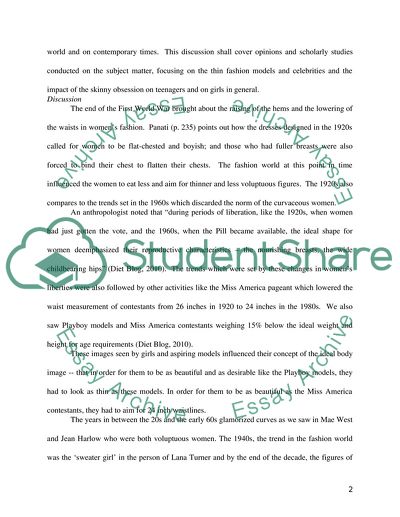Anorexia in the Fashion Industry Research Paper Example | Topics and Well Written Essays - 500 words. Retrieved from https://studentshare.org/social-science/1566043-rewrite-the-first-draft-of-the-paper-on-unhealthy-models-thinness
Anorexia in the Fashion Industry Research Paper Example | Topics and Well Written Essays - 500 Words. https://studentshare.org/social-science/1566043-rewrite-the-first-draft-of-the-paper-on-unhealthy-models-thinness.


